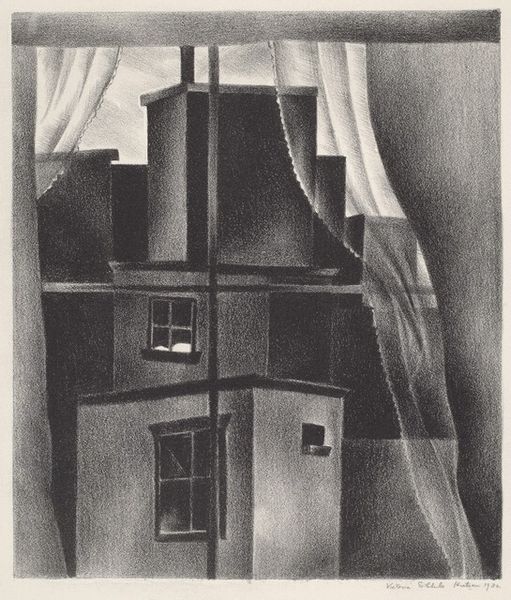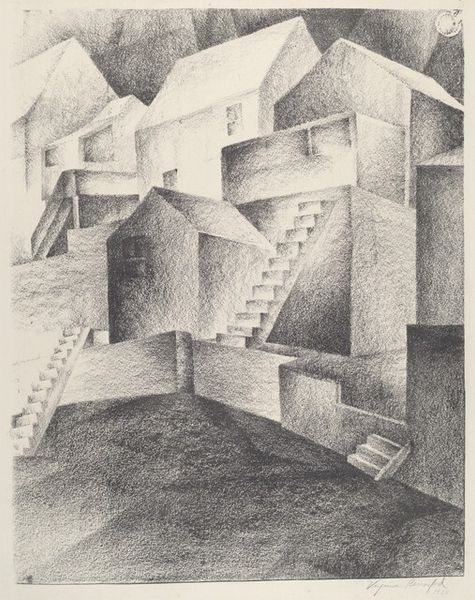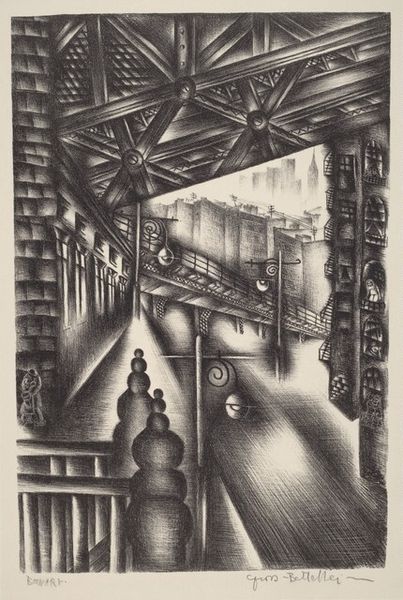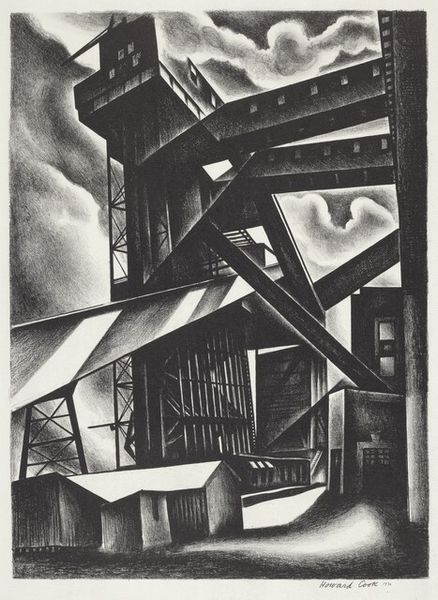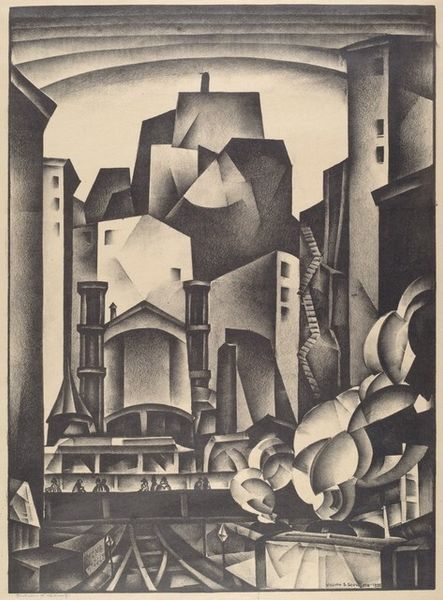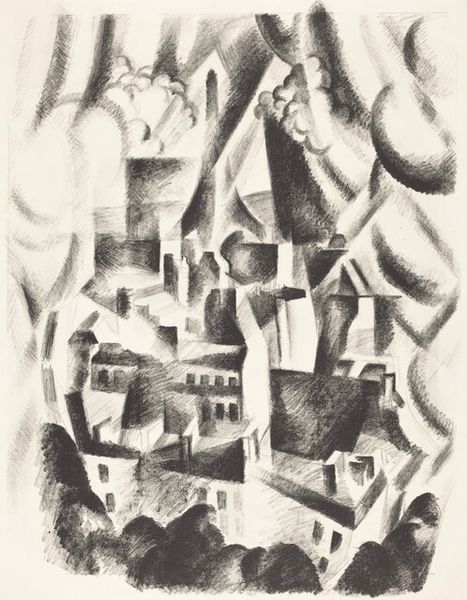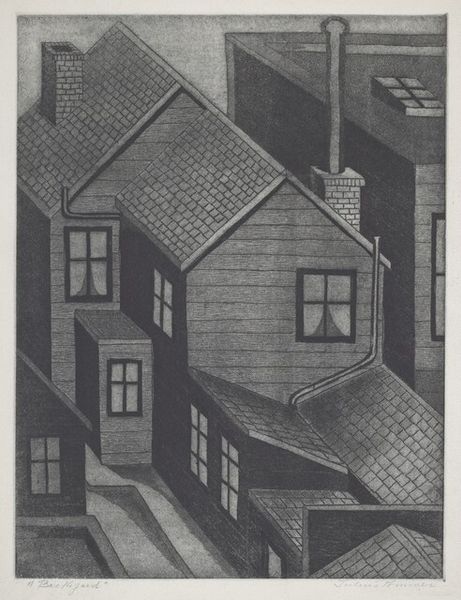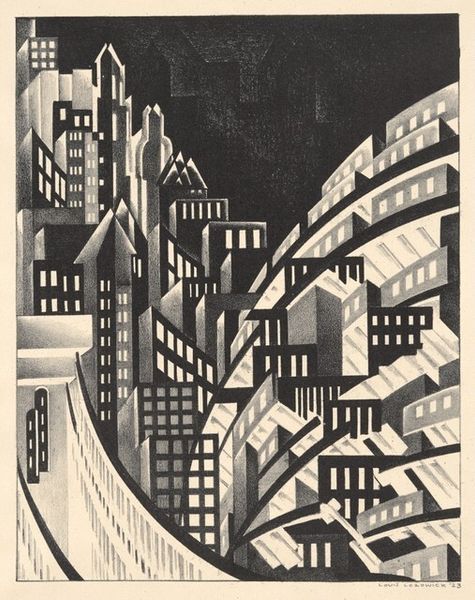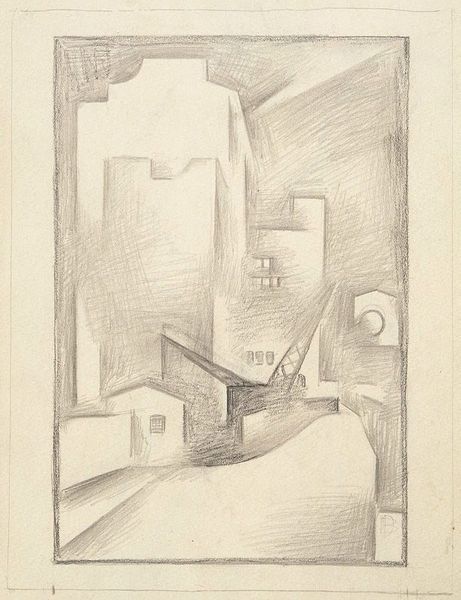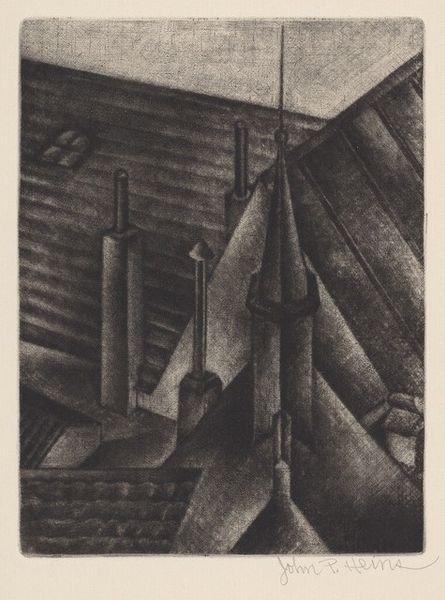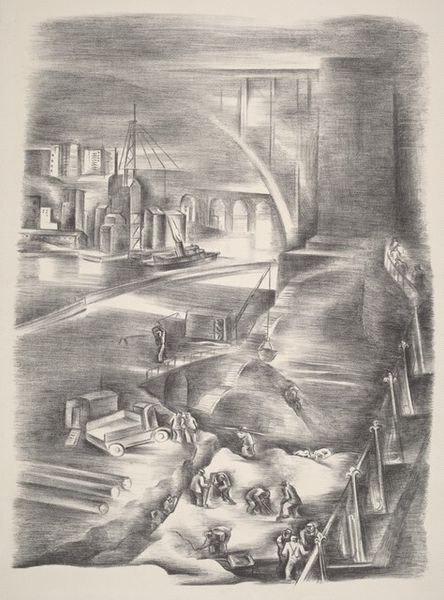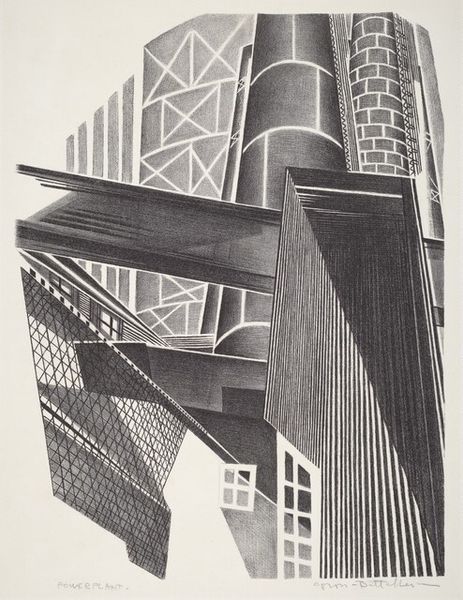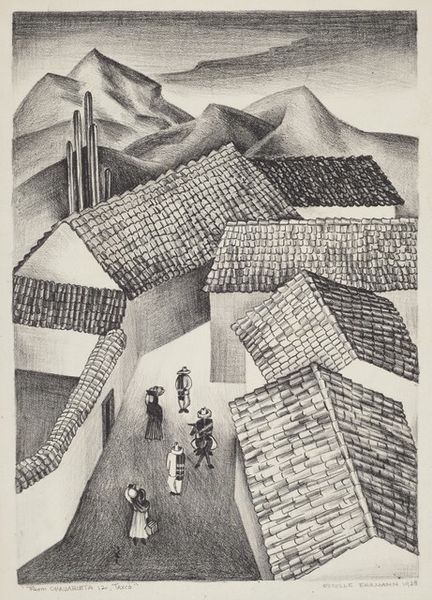
drawing, print, graphite
#
drawing
# print
#
charcoal drawing
#
geometric
#
graphite
#
cityscape
#
graphite
#
realism
Dimensions: image: 35.5 × 29.4 cm (14 × 11 9/16 in.) sheet: 51 × 38 cm (20 1/16 × 14 15/16 in.)
Copyright: National Gallery of Art: CC0 1.0
Curator: This is Richard Day’s “Roofs, D.F.,” a drawing and print made in 1933. It is predominantly rendered in graphite and charcoal. What's your initial impression? Editor: Stark. Almost surreal in its geometry. The rigid forms feel weighty, and the light gives the entire scene an eerie stillness. Curator: Indeed, the geometric rendering is striking. Day masterfully uses line and shading to create depth and volume. The recurring rectangles and squares, repeated in rooftops, windows, and the step patterns create an intentional architectural and rhythmic visual structure. Editor: I see it as almost devoid of human presence, despite depicting a city. Those repeating shapes... those oppressive and inescapable roofs, hint at the social housing conditions and rapid urban development in Mexico City during that period. Do you find the architectural choices influencing the public life of its inhabitants? Curator: Fascinating reading. I see the geometric repetition, not so much as oppressive, but instead unifying and visually stable. Note how his perspective choices direct your gaze, forcing you into this almost voyeuristic composition of receding forms. His technical skill is quite commendable here. Editor: Well, what cannot be escaped can feel, visually and socially, oppressive in consequence. Considering the print's timing – early 1930s – there's perhaps a commentary on urbanization. Also, remember the social movements arising from it, as it visually shows the effects on daily living and challenges around city-life! Curator: That’s quite possible. The city as both stage and subject, a common trope in interwar art! Perhaps the very stillness and geometric solidity suggests the eternal essence of this space. I find the lack of a truly centered subject interesting; the artist asks us to scan and discern. Editor: Yes, well said. I feel Day has subtly captured the conflicting spirit of the age... A march to modernize with these angular forms in play, whilst the rigid forms show potential for oppression! It is, in its formal precision, ripe for such political readings. Curator: Yes. Day asks profound visual questions through these geometries and shading. He delivers, through this simple medium, a wealth of contemplations. Editor: A fitting end indeed, especially how his creation speaks of societal progression or maybe repression. It makes us think about those who live within those physical frameworks.
Comments
No comments
Be the first to comment and join the conversation on the ultimate creative platform.
